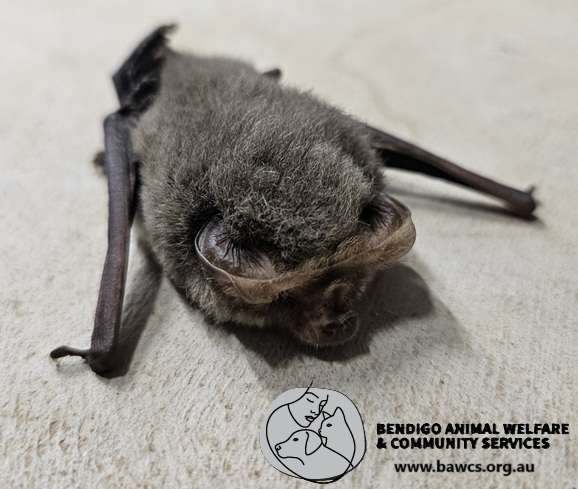MAGINE BAWCS surprise when this microbat fell out of a dog coat that was being stored on a shelf in our kennel area tonight.
Microbats are active throughout the warmer months then typically go into hibernation from May to August every year. We think this little one had just started his/her hibernation.
Deciding to move him (carefully) as it wasn’t an ideal place to be, our little friend woke up and took off, into the ‘bat sky’ to no doubt find a more suitable place to settle back down for hopefully, this time an undisturbed sleep.
Interesting ‘bat facts’
Victoria is home to 23 species of microbats (also called insectivorous bats), which are small bats that can weigh as little as 3 grams. Due to their insect-based diet, they are natural pest controllers and therefore play an important role in their ecosystem as well as in managing agricultural pests.
As they are nocturnal, microbats generally sleep hanging upside down in small, dark, quiet places during the day – commonly under eaves, tree hollows, folded outdoor umbrellas or caves. (although not hanging at the time, in this case under a dog coat at an animal shelter! )
NOTE: via Wildlife Victoria – Although microbats pose minimal risk to human health, it’s important to never handle a microbat or any other type of bat. Australian bat lyssavirus (ABLV) has been detected in some species of Victorian microbats, although the prevalence of infected bats is low. ABLV has the potential to be transmitted if you are bitten or scratched by a bat carrying the virus.
The best way to protect yourself is to not handle any bats you may come across. Please call Wildlife Victoria’s Emergency Response Service on (03) 8400 7300 if you need assistance with a microbat.
BAWCS ‘caring with compassion’

